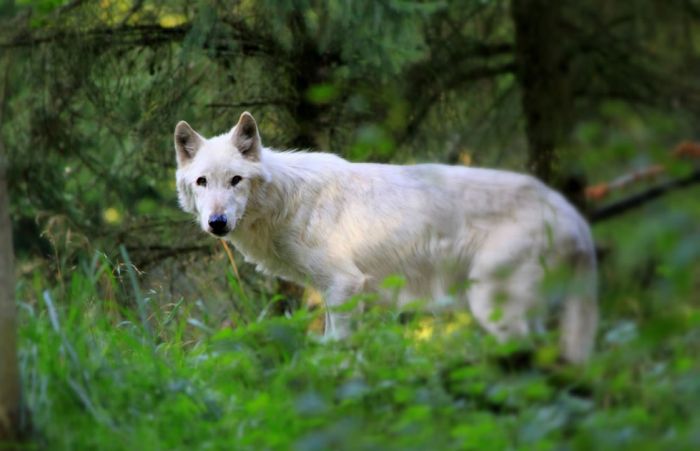|
|
Gray Wolf
|
Predatory attacks usually involve single wolves or packs that learn to exploit humans as prey. Such attacks may be preceded by a long period of habituation, in which wolves gradually lose their fear of humans. The victims are generally attacked in a sustained manner around the neck and face, and are then dragged off and consumed, unless the wolves are disturbed. Such attacks tend to cluster in time and space until the offending animals are killed. Predatory attacks can occur at any time of the year, with a peak in the June–August period, when the chances of people entering forested areas (for livestock grazing or berry and mushroom picking) increase, though cases of non-rabid wolf attacks in winter have been recorded in Belarus, the Kirovsk and Irkutsk districts, Karelia and Ukraine. Also, wolves with pups experience greater food stresses during this period. The majority of victims of predatory wolf attacks are children under the age of 18 and, in the rare cases where adults are killed, the victims are almost always women. Non-rabid wolves are able to distinguish between armed and unarmed people, and will typically avoid investigating people who display self confident demeanors typical of being armed.
Wolves may react aggressively in self defense, though such attacks are mostly limited to quick bites on extremities, and the attacks are not pressed.
• Hunting
Wolves are notoriously difficult to hunt due to their elusiveness, their sharp senses, their high endurance in the chase and ability to quickly incapacitate and kill hunting dogs. Historically, many methods have been devised to hunt wolves. In areas where wolves are a threat to livestock, the destruction of spring-born litters in their dens is a sure way of keeping wolf populations to a minimum. When hunting wolves with dogs, usually combinations of sighthounds, bloodhounds and fox terriers are used. The sighthounds chase and immobilise wolves until the arrival of the heavier dogs which do most of the fighting. Still hunting of wolves (alternately walking quietly and waiting concealed in the pursuit of game) is primarily practised in areas where the terrain is too rough for hunting with dogs, though wolves are almost as hard to hunt with this method as cougars are. Because of their sharp hearing, wolves are almost impossible to stalk, even when asleep. Poisoning with strychnine was once practised, but is now generally unpopular, as it can cause the unintentional deaths of animals other than wolves, and wolves generally learn to recognise and avoid poisoned baits. The ideal time for wolf poisoning was during the late summer and early autumn period, when pups were more likely to stray from their mothers and consume objects which they had yet to learn to avoid. Foothold traps are effective, as long as no long lasting human odours are present on them. Many Native American tribes favoured deadfall traps in capturing wolves. Wolf traps are sometimes accompanied by scents (usually beaver or musk deer musk and wolf urine) or baits (venison or horse meat). Traps however are not foolproof; because of their excellent vision, wolves can detect the flaws in hidden traps, even at night, and wolves with prior experience of being trapped can teach their young to avoid them. Hunting blinds can be effective against wolves, though they are seldom used, as their use requires much patience. A popular method of wolf hunting in Russia involves trapping a pack within a small area by encircling it with flag poles carrying a human scent. This method relies heavily on the wolf's fear of human scents, though it can lose its effectiveness when wolves become accustomed to the smell. Some hunters are able to lure wolves by imitating their calls, a method which is especially useful in winter and the mating season. In Kazakhstan and Mongolia, wolves are traditionally hunted with eagles and falcons, though this practise is declining, as experienced falconers are becoming few in number. Shooting wolves from aircraft is highly effective, as it allows greater visibility of wolves than hunting on the ground, though this method is controversial, as it allows wolves little chance to escape or defend themselves.
|
|









